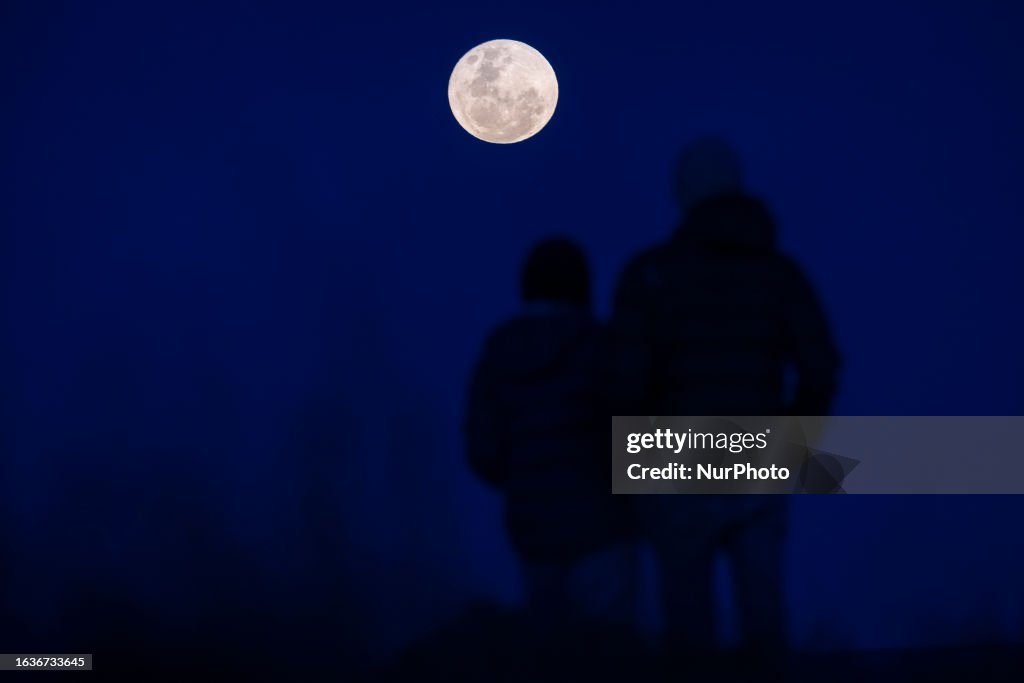The rare super blue moon of Monday is a fascinating statistical phenomenon
How common is it? It’s up to you who you are asking. But, it’s sure that this full moon of Monday is going to be something special.
A rare sky phenomenon will be seen on Monday night and (probably) is unlikely to be seen again for a long time Full moon that could be described as supermoon as well as blue moon will be visible in the night sky across the U.S.
Also known as”a “super blue moon,” the rare event occurs when the various cycles of supermoons and blue moons coincide to coincide on the calendar, according to NASA’s Noah Petro, Lunar Reconnaissance Orbiter project scientist.
If you think that’s confusing enough, astronomers also have differing definitions of what is a supermoon, and what qualifies in a “blue moon. (Just last year the full moon was able to meet the requirements for both, according to some standards.)
Here’s the reason the full moon on Monday is so special:
What is a supermoon?
The moon’s orbit makes it nearer to Earth than normal the cosmic combination is known as supermoon. A supermoon occurs when the moon’s orbit is close to Earth while the moon is at its fullest. The term was coined by the astrologer Richard Nolle in 1979.
“Different publications use slightly different thresholds for deciding when a full moon is close enough to the Earth to qualify as a supermoon,” NASA stated. “Because the orbit of the moon is not a perfect circle, the moon is sometimes closer to the Earth than at other times during its orbit.”
When the moon is at the closest spot to Earth approximately 226,000 miles from Earth, full moons appear larger and brighter than other dates. A supermoon will appear 30 percent bigger and brighter than a normal full moon.
Is a moon blue?
Two kinds of blue moons, lunar and seasonal. The one Monday will be that of the seasonal variety.
A blue moon that is seasonal is when there four full moons within the same season (on this particular occasion, it is it is summer). When this occurs, the third of the four moons is considered to be a blue moon.
Another definition, which was derived from a misinterpretation of the source term – refers to the monthly blue moon meaning two full moons of one lunar month.
In any case blue moons gain their fame for being scarce due to a lapse within the normal pattern of a full moon each month.
The moon’s cycle lasts 29.5 day. But, as Missouri State University professor of Astrophysics Mike Reed notes, months can include 28-29 30, or 31 days.
Both cycles cause oddly different patterns, which result in a moon that is larger the month or season than usual – which is an ecliptic moon.
Months typically contain one full moon,, unless there’s an (monthly) blue moon. And seasons typically include three full moons in the event of the (seasonal) blue moon.
Also that, the moon’s full on Monday is not likely to appear blue, but blue-colored moons in photographs are typically created using special blue camera filters or editing software.
How common is the super blue moon? When will the next one be?
“It’s tricky to answer, because it depends on your definition of a supermoon and a blue moon,” Edward Bloomer, senior astronomy manager at the U.K. The Royal Observatory Greenwich told USA TODAY by an e-mail.
The answer varies according to the type of moon you’re discussing, an annual blue moon or a month-long blue moon. If you tweak the definition of supermoons, the definition will change.
In general the blue moon occurs every three or four years, in accordance the NASA. The time between super blue moons could be as long as 20 years. However, generally 10 years is the normal interval.
So, when do you think the super blue moon will next happen?
The best time to bet on HTML0 is to wait until January 2037, in the opinion of NASA. /a>
However, based on what you define as a super blue moon you might hear of another moon rising prior to that.










